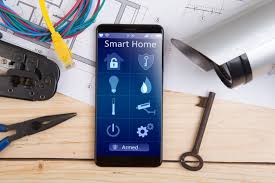We’ve all been there—you buy a shiny new smart home gadget, plug it in, download the app, and when it asks you to create a password… you type something quick and easy, weak password just to get it working. Maybe it’s 123456, password, or your pet’s name with a “1” at the end.
You promise yourself you’ll change it later. But later never comes.
Here’s the problem: in the world of cybersecurity, that one lazy moment can turn into a hacker’s golden ticket—not just into your new device, but into your entire home.
If you think I’m exaggerating, let’s walk through seven very real, very alarming ways a weak password can give cybercriminals the keys to your digital kingdom.
1. Total Device Takeover
When your password is easy to guess, you’re basically inviting hackers in through the front door. And once they’re in, they don’t just control that one device—they can often control everything connected to it.

Example:
Let’s say your smart thermostat has a weak password. A hacker breaks in and gains access to its settings. From there, they can poke around your home network, find other connected devices, and spread their attack.
It’s like a burglar sneaking in through a window, then unlocking every other door in your house.
2. Spying Through Cameras and Mics
If you have smart security cameras, doorbell cams, or even smart speakers with built-in microphones, a weak password can turn them into 24/7 surveillance tools—but not for you.
Hackers can:
- Watch live video feeds inside or outside your home.
- Record conversations.
- Track your daily routines to know when you’re not home.
It’s creepy, invasive, and all too real. There have been countless cases where compromised cameras were used for harassment, stalking, or even blackmail.
3. Turning Your Devices Into Botnet Soldiers
Here’s a nightmare most people don’t think about: your smart fridge, TV, or lightbulbs could be drafted into a hacker’s army—without you ever knowing.

Weak passwords make it easy for cybercriminals to infect your devices with malware that joins them into a botnet. Botnets are used to launch massive cyberattacks, send spam, or spread viruses.
The worst part? Your devices still work, so you won’t notice—until your internet slows to a crawl or your ISP flags suspicious activity coming from your home.
4. Locking You Out of Your Own Home
Some smart locks and security systems can be remotely controlled through an app. Great for letting in guests or service workers—unless a hacker gets there first.
With the right password, they could:
- Lock you out.
- Disable alarms.
- Unlock doors without triggering alerts.
Imagine coming home to find your smart lock won’t open and your system’s “owner” account has been changed to someone else. That’s the digital equivalent of changing your house keys while you’re still inside.
5. Stealing Personal and Financial Data
Your smart home isn’t just a bunch of gadgets—it’s a gateway to your personal life. Many devices store or transmit sensitive information: Wi-Fi passwords, contact lists, credit card details, or even health data from fitness devices.
A weak password can give hackers an easy way to grab that data and sell it on the dark web. From there, it can lead to:
- Identity theft.
- Unauthorized purchases.
- Fraudulent accounts opened in your name.
6. Messing with Your Daily Life Just for Fun
Sometimes hackers aren’t after money—they just want chaos. And your smart home is a playground.
They might:
- Turn your lights on and off at random times.
- Blast music at 3 AM.
- Change your thermostat to 90°F in summer or 50°F in winter.
These may sound like pranks, but they can be unsettling and disruptive—especially if you don’t know who’s doing it or how to stop it.
7. Using One Weak Password to Crack the Rest
Here’s where it gets even scarier: many people reuse passwords across multiple accounts. If a hacker gets your smart home password, they might try the same login on your email, bank, or social media accounts.
This is called credential stuffing, and it’s frighteningly effective. Suddenly, that “harmless” weak password for your smart toaster becomes the key to your online identity.
Why Smart Homes Are Juicy Targets for Hackers
A few years ago, hackers mainly went after computers and phones. But smart homes have changed the game. Here’s why they’re so tempting:
- Sheer number of devices: More gadgets mean more entry points.
- Always online: Unlike laptops, smart devices rarely get turned off.
- Weak security by default: Many come with default passwords like “admin” or “0000” that users never change.
- Low user awareness: People don’t think of a smart fridge as a cybersecurity risk—but it is.
How to Protect Your Smart Home from Password-Based Attacks
You don’t need to be a tech genius to lock down your devices. Here’s a simple action plan:
1. Use Strong, Unique Passwords for Every Device
- Minimum 12 characters.
- Mix of upper/lowercase, numbers, and symbols.
- Avoid personal info like birthdays or pet names.
Example: T3a!_h@use_R3n0v#2025
2. Turn on Two-Factor Authentication (2FA)
Even if your password is stolen, 2FA requires a second step—like a code sent to your phone—before anyone can log in.
3. Change Default Settings Immediately
Don’t keep the default username/password. Hackers know them—they’re public.
4. Keep Devices Updated
Manufacturers release security patches to fix known issues. If your device supports auto-updates, enable it.
5. Use a Separate Network for Smart Devices
Most routers let you create a “guest” network. Keep your smart gadgets there so they’re isolated from your main devices like laptops and phones.
6. Monitor Your Devices
Regularly log in to check for unknown devices connected or suspicious activity.
The Cost of Ignoring the Risk
Think about it—would you leave your front door unlocked because you’re “probably fine”? That’s what a weak password does for your smart home. The cost of a breach can be huge:
- Replacing hacked devices.
- Recovering stolen data.
- Paying for identity theft protection.
- Emotional stress of knowing your privacy was invaded.
The Bottom Line
A smart home should make life easier—not open you up to a world of digital trouble. And while hackers are always evolving, so are our defenses. The simplest, cheapest, and most effective step you can take right now? Change your passwords.
Because the truth is, in the world of smart homes, one weak password isn’t just a crack in the door—it’s swinging it wide open.
So, take five minutes today. Update your logins. Turn on 2FA. And sleep a little easier knowing your home is actually smart—because it’s secure.





